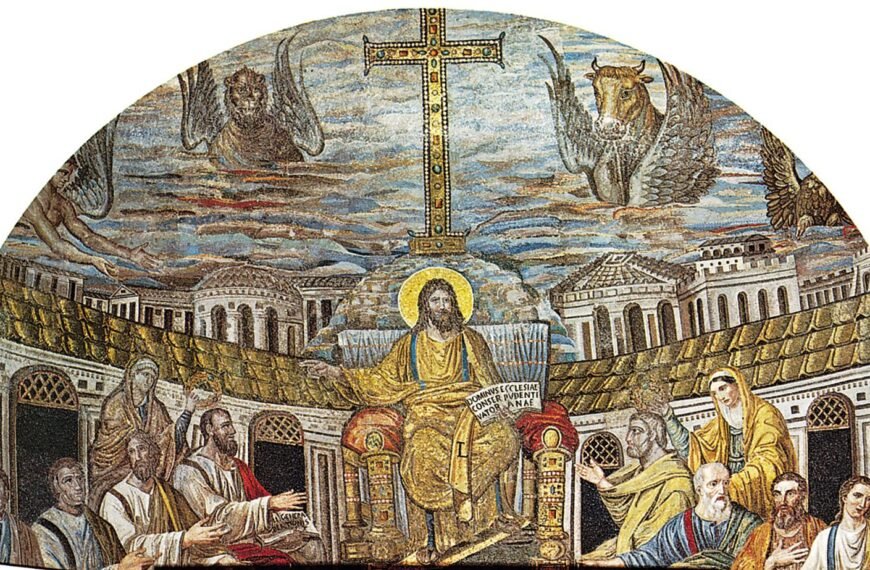Have you ever wondered about the deeper meaning behind the serpent in the Bible? Throughout the Scriptures, this creature appears as a symbol with significant religious and cultural implications, representing more than meets the eye. From the story of Adam and Eve in the Garden of Eden to the narrative of Moses and the Israelites in the wilderness, the serpent embodies themes of temptation, wisdom, and healing. But what is its true symbolism? Join us as we unravel the hidden meanings and explore the rich biblical interpretations surrounding the serpent. Prepare to be enlightened and challenged by this age-old question – What does the serpent truly symbolize in the Bible?
Table of Contents
Serpent Symbolism in the Story of Adam and Eve
In the story of Adam and Eve in the Garden of Eden, the serpent is depicted as a cunning creature that tempts Eve to eat the forbidden fruit from the Tree of Knowledge. The serpent’s actions symbolize temptation, disobedience, and the fall of humanity from a state of innocence. This narrative is often interpreted as a cautionary tale about the consequences of giving in to temptation and straying from God’s commands.
“And the serpent said to the woman, ‘You will not surely die. For God knows that when you eat of it your eyes will be opened, and you will be like God, knowing good and evil.'” – Genesis 3:4-5
The serpent’s role in this story is significant in terms of its serpent symbolism and its implications for the human experience. It exemplifies the temptations and choices that every individual faces, as well as the consequences that can arise from yielding to those temptations.
Symbolism of the Serpent

The serpent represents more than just a literal creature in the biblical narrative of Adam and Eve. It carries symbolic weight that extends beyond the Garden of Eden. The serpent serves as a potent symbol throughout human history, representing the eternal struggle between good and evil, wisdom and ignorance, and temptation and obedience.
- Temptation: The serpent’s act of tempting Eve is seen as a metaphor for the allures and allurements that humans face in their daily lives. It represents the temptations that can lead individuals astray and result in their separation from God and moral righteousness.
- Disobedience: By succumbing to the serpent’s temptation and eating the forbidden fruit, Adam and Eve disobeyed God’s command and introduced sin and suffering into the world. This act of disobedience is pivotal in the story, highlighting the consequences of straying from divine instructions.
- The Fall of Humanity: The serpent’s role in tempting Eve is closely tied to the concept of the Fall of Humanity. When Adam and Eve ate the forbidden fruit, they gained knowledge of good and evil, but at the cost of their innocence. The serpent’s actions in the Garden of Eden thus signify the fall of humanity from a state of purity and harmony with God.
The story of Adam and Eve and the serpent’s involvement resonates with people from various cultures and religions. Its symbolic nature continues to provoke thought and introspection about the complexities of human existence.
| Symbolism | Description |
|---|---|
| Temptation | The serpent represents the allure and temptations that humans face in their lives, leading them astray. |
| Disobedience | Adam and Eve’s disobedience to God’s commands showcases the consequences of straying from divine instructions. |
| The Fall of Humanity | The serpent’s role in Eve’s temptation signifies the fall of humanity from a state of purity and harmony. |
Serpent Symbolism in the Story of Moses and the Israelites
In the story of Moses and the Israelites in the wilderness, a serpent is used as a symbol of **God’s power** and **healing**. When the Israelites were plagued by venomous snakes, God instructed Moses to create a **bronze serpent** and lift it up on a pole. Those who looked at the serpent were miraculously healed. This serpent symbolizes **God’s provision, mercy**, and the need for **faith and obedience**. It foreshadows the ultimate healing and salvation through Jesus Christ.
“And the Lord said to Moses, ‘Make a fiery serpent and set it on a pole, and everyone who is bitten, when he sees it, shall live.’ So Moses made a bronze serpent and set it on a pole. And if a serpent bit anyone, he would look at the bronze serpent and live.” – Numbers 21:8-9
The serpent in this story serves as a powerful reminder of **God’s ability to bring about healing and redemption**. It serves as a focal point for the Israelites to exercise their **faith** and trust in God’s promises. By looking at the bronze serpent, they demonstrated their obedience and reliance on God’s provision.
This narrative holds great significance in the biblical context, as it serves as a metaphor for the **crucifixion of Jesus Christ**. Just as the Israelites were healed by looking at the bronze serpent, humanity finds healing and salvation by **placing their faith in Jesus’ sacrifice on the cross**.
Symbolism in the Story of Moses and the Israelites
| Serpent Symbolism | Meaning |
|---|---|
| Power and Healing | Represents God’s ability to bring about miraculous healing and redemption |
| Bronze Serpent on a Pole | Symbolizes God’s provision, mercy, and the need for faith and obedience |
| Crucifixion Parallel | Foretells Jesus’ sacrifice on the cross and the ultimate healing and salvation through faith in Him |
The symbolism of the serpent in the story of Moses and the Israelites showcases the **complexity** and depth of biblical narratives. Through this powerful symbol, the story conveys profound spiritual truths, emphasizing the importance of faith, obedience, and the ultimate redemption found in Jesus Christ.
Serpent Symbolism in Wisdom and Deceit
The serpent holds a significant place in biblical symbolism, representing both wisdom and deceit. In the Book of Proverbs, the serpent is associated with wisdom, illustrating its cunning and ability to navigate complex situations. The wise are compared to serpents, highlighting their shrewdness and prudence in making informed decisions.
“Look at the generation of the righteous and bless their good fortune; their daughters are serpents in wisdom – and every wise man seeks to associate with them.”
Conversely, the serpent is also portrayed as a deceiver in biblical texts. In the Book of Revelation, Satan is referred to as “that ancient serpent” who deceives the whole world, emphasizing the dangers of falsehood and manipulation.
“And the great dragon was cast down, the ancient serpent, called the Devil, and Satan, he who leads astray the whole world…”
This duality of wisdom and deceit within serpent symbolism underscores the importance of discernment in biblical interpretation. It serves as a reminder of the potential dangers lurking behind charismatic personalities and deceptive ideologies.
Wisdom in the Book of Proverbs
Proverbs 30:19 compares the movement of an eagle in the sky, the slinking of a snake on a rock, and the sailing of a ship on the ocean. This verse implies that just as the eagle, snake, and ship are wise in their respective environments, humans must also display wisdom in their lives.
Deceit in the Book of Revelation
In the Book of Revelation, the serpent symbolizes Satan, the ultimate deceiver who brings chaos and destruction. Satan’s ability to deceive the whole world showcases the power and subtlety of deceit, urging individuals to remain vigilant.
| Symbolism | Representation |
|---|---|
| Wisdom | Comparing the wise to serpents in the Book of Proverbs |
| Deceit | Satan portrayed as “that ancient serpent” in the Book of Revelation |
Serpent Symbolism in Other Cultures and Religions
Serpent symbolism is not limited to the Bible but can also be found in various cultures and religions around the world. In ancient Egyptian mythology, the serpent represented both chaos and renewal. In Hinduism, the serpent is associated with Kundalini energy and spiritual enlightenment. In Native American traditions, the serpent often symbolizes transformation and rebirth. These diverse interpretations of serpent symbolism highlight its universality and enduring significance.
| Culture/Religion | Symbolic Meaning |
|---|---|
| Ancient Egypt | The serpent represented both chaos and renewal. |
| Hinduism | The serpent is associated with Kundalini energy and spiritual enlightenment. |
| Native American | The serpent often symbolizes transformation and rebirth. |
The serpent’s symbolic significance goes beyond religious texts like the Bible. In ancient Egypt, the serpent represented both chaos and renewal, reflecting its dual nature. It embodied the everlasting cycle of creation and destruction, symbolizing the cycle of life itself. In Hinduism, the serpent is closely linked to Kundalini energy, believed to reside dormant at the base of the spine. Awakening this serpent power is an essential part of achieving spiritual enlightenment. In Native American cultures, the serpent is often seen as a symbol of transformation and rebirth, representing the cyclical nature of life and the ability to shed old identities and emerge anew.
This cross-cultural symbolism of the serpent points to its universal significance and its ability to capture profound and timeless themes such as chaos, renewal, enlightenment, and transformation. While interpretations may vary, the serpent remains an enduring symbol that continues to inspire and provoke contemplation in cultures and religions around the world.
The Serpent as a Dualistic Symbol
The symbolism of the serpent in the Bible is rich and multifaceted. It serves as a dualistic symbol, representing both good and evil, depending on the context in which it is mentioned.
While the serpent is often associated with negative aspects such as temptation and deceit, it also holds symbolic meanings of wisdom, healing, and divine power. This duality in serpent symbolism reflects the complex nature of human existence and the perpetual struggle between positive and negative forces.
“The serpent has long been a symbol of dualism, embodying both darkness and light. Its presence in biblical narratives invites deeper contemplation of the inherent contradictions within ourselves and our world.” – Theologian Dr. Sarah Thompson
In the story of Adam and Eve, the serpent is portrayed as a source of temptation and the catalyst for their fall from grace. Here, the serpent embodies the negative aspects of its symbolism, representing deceit and the allure of forbidden knowledge.
However, the serpent’s symbolic meaning expands beyond its association with temptation. In the story of Moses and the Israelites, the serpent is used as a means of healing. Those who gazed upon the bronze serpent on a pole were miraculously cured from venomous snake bites. In this context, the serpent represents God’s power and mercy, offering hope and redemption to the afflicted.
The Complexity of Serpent Symbolism
The serpent’s dualistic symbolism is also evident in other religious and cultural contexts. In ancient Egyptian mythology, the serpent symbolized both chaos and renewal, highlighting its ability to bring about both destruction and transformation.
Moreover, the concepts of wisdom and deceit are deeply intertwined in serpent symbolism. In the book of Proverbs, the serpent is associated with wisdom, illustrating its shrewdness and ability to navigate intricate situations. Conversely, in the book of Revelation, the serpent is identified as Satan, representing the ultimate deceiver and the embodiment of evil.
The pulsating tension between the positive and negative aspects of serpent symbolism forces us to confront the intricacies of the human condition. It serves as a reminder that both light and darkness reside within us, urging us to strive for wisdom, discernment, and the triumph of good over evil.
Modern Interpretations and Applications
In modern times, the symbolism of the serpent continues to hold profound meaning and find new interpretations. It has become a powerful metaphor for the complexity of the human psyche, representing our inner desires, fears, and struggles. **Serpent symbolism** has been embraced by psychology and psychoanalysis as a symbol for the subconscious and the depths of the human mind. It represents the hidden aspects of our personality, the primal instincts that lie beneath the surface.
“The serpent, as a symbol, serves as a mirror to the depths of the human soul, inviting us to explore our innermost fears and desires.” – Carl Jung
Additionally, the serpent is seen by many as a symbol of transformation and personal growth. Similar to how a snake sheds its old skin, humans have the capacity to shed old identities and beliefs, growing into their true selves. This interpretation aligns with the idea of rebirth and renewal, emphasizing the serpent’s symbolism of personal evolution.
In religious and spiritual contexts, the serpent’s symbolism is often harnessed to convey profound lessons about morality, redemption, and the human condition. **Serpent symbolism** in these contexts can signify the dual nature of humanity, reflecting both our potential for goodness and the temptation to stray from the path of righteousness. It serves as a reminder to seek wisdom, navigate the complexities of life, and ultimately strive for spiritual enlightenment.
The Serpent as a Symbol of Guidance
In some interpretations, the serpent is viewed as a guide, leading individuals towards self-discovery and spiritual awakening. This can be seen in the Kundalini energy represented by the serpent in Hinduism. In this tradition, the serpent symbolizes the dormant spiritual energy residing at the base of the spine, which can be awakened through yoga and meditation practices.
Furthermore, the serpent’s symbolism as a guide is exemplified in the medical field, where it is associated with healing and rejuvenation. The serpent entwined around a rod, known as the Rod of Asclepius, is the universally recognized symbol of medicine. It conveys the idea of healing and the restoration of health, underscoring the serpent’s potential for positive transformation.
Overall, the modern interpretations and applications of serpent symbolism are diverse and multifaceted. Whether viewed as a representation of the human psyche, a symbol of transformation and growth, or a guide towards spiritual enlightenment, the serpent continues to captivate and inspire us with its rich and enigmatic symbolism.
Final Thoughts on Serpent Symbolism in the Bible
The symbolism of the serpent in the Bible is rich and varied, holding deep significance within its narratives. Throughout the scriptures, the serpent represents more than just temptation and deceit. It embodies a complex interplay of themes, including wisdom, healing, and divine power. Understanding the full scope of serpent symbolism invites readers to dive deeper into the layers of biblical interpretation, encouraging introspection and reflection on the human condition.
By exploring the serpent’s multifaceted symbolism, one can gain a deeper appreciation for the Bible’s messages. The serpent’s role as a tempter in the story of Adam and Eve illustrates the consequences of straying from moral boundaries, while its association with healing in the story of Moses and the Israelites exemplifies God’s provision and mercy. In the wider context of wisdom and deceit, the serpent reveals the necessity of discernment amidst a complex world.
The significance of serpent symbolism extends beyond the biblical text. It can be found in various cultures and religions, reaffirming its universal allure. The serpent’s dualistic nature further underscores the ongoing struggle between good and evil, denoting the complexities within human nature. Whether interpreted as a metaphor for the human psyche or as a symbol of personal growth and transformation, the serpent’s enduring symbolism transcends time, bridging the ancient and modern worlds.
In conclusion, serpent symbolism in the Bible offers readers a world of meaning and interpretation. Its presence throughout scripture invites us to reflect on our own lives, inspiring us to strive for wisdom, navigate the pitfalls of deceit, and seek divine guidance and healing. The serpent remains a potent symbol that continues to capture the imagination and ignite contemplation, underscoring its enduring relevance in the human journey of faith.
FAQ
What does the serpent symbolize in the Bible?
The serpent is a symbol that holds significant religious and cultural implications in the Bible. It appears in various narratives throughout the Scriptures and is associated with themes of temptation, deceit, wisdom, and healing.
What is the serpent’s symbolism in the story of Adam and Eve?
In the story of Adam and Eve in the Garden of Eden, the serpent symbolizes temptation, disobedience, and the fall of humanity from a state of innocence. It is depicted as a cunning creature that tempts Eve to eat the forbidden fruit, resulting in the consequences of straying from God’s commands.
How is the serpent symbolized in the story of Moses and the Israelites?
In the story of Moses and the Israelites in the wilderness, the serpent is used as a symbol of God’s power and healing. When the Israelites were plagued by venomous snakes, God instructed Moses to create a bronze serpent and lift it up on a pole. Those who looked at the serpent were miraculously healed.
What is the serpent’s symbolism in regards to wisdom and deceit?
The serpent is associated with wisdom and deceit in the Bible. It is compared to the wise in the Book of Proverbs, highlighting its cunning and ability to navigate complex situations. In the Book of Revelation, the serpent is also described as Satan, the deceiver of the whole world, emphasizing the dangers of falsehood and manipulation.
Is serpent symbolism exclusive to the Bible?
No, serpent symbolism can also be found in various cultures and religions worldwide. In Egyptian mythology, the serpent represented chaos and renewal. In Hinduism, it is associated with spiritual enlightenment. In Native American traditions, the serpent often symbolizes transformation and rebirth.
What does the serpent symbolize as a dualistic symbol?
The serpent’s symbol in the Bible reflects a dual nature, representing both good and evil depending on the context. While it is often associated with negative aspects like temptation and deceit, it can also symbolize wisdom, healing, and divine power, reinforcing the complexity of human nature.
Are there modern interpretations and applications of serpent symbolism?
Yes, the symbolism of the serpent continues to be interpreted and applied in modern times. Some see it as a metaphor for the human psyche, representing desires, fears, and struggles. Others view it as a symbol of transformation and personal growth, while religious and spiritual contexts use it to convey lessons about morality, redemption, and the human condition.
What are the final thoughts on serpent symbolism in the Bible?
The symbolism of the serpent in the Bible is complex and multifaceted, encompassing themes of temptation, wisdom, deceit, healing, and divine power. Understanding the significance of the serpent can enhance one’s interpretation and appreciation of the Bible’s messages, inviting readers to explore deeper meanings and reflect on the human condition.

Rockin’ the faith, one verse at a time!
Growing up, the Bible’s stories deeply impacted me. Now, with over 15 years of preaching experience, I blend timeless teachings with modern technology, making them relevant for today’s world.
Bible Hub Verse is my platform to share historical insights and thought-provoking articles, exploring both familiar and uncommon Christian topics. My passion is building a welcoming online space for everyone to learn, grow in their faith, and discover the Bible’s enduring message.
Join the journey!
God bless you.






